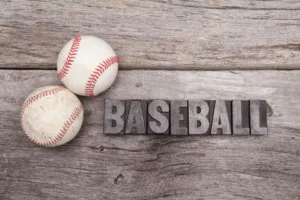Exploring the World of D1 Baseball Scholarships and Available Opportunities
Are you interested in discovering the ins and outs of D1 baseball scholarships – from understanding the numbers to seizing potential opportunities? Uncover valuable insights to enhance your journey in collegiate baseball recruitment.

Exploring the Dynamics of Baseball Scholarships
Within the domain of college baseball, spanning NCAA institutions, NAIA schools, and junior colleges, a panorama emerges featuring over 1,650 programs accommodating approximately 34,500 players nationwide. Pursuing the constrained pool of roughly 5,400 scholarships is an intensely competitive endeavor. Baseball is an equivalency sport, enabling scholarships to be fragmented and distributed among diverse players. Securing a full-ride scholarship in the realm of baseball remains an infrequent accomplishment. This exploration explores baseball scholarship complexities, unraveling essential details for a comprehensive understanding.
SEE ALSO: Are Nitro Scholarships Legit?
HOW MANY BASEBALL SCHOLARSHIPS ARE PERMITTED: DISTRIBUTION OF BASEBALL SCHOLARSHIPS ACROSS DIVISION LEVELS
| Division Level | Number of Teams | Total Athletes | Average Team Size | Scholarship Limit Per Team | Scholarship Limit Type |
|---|---|---|---|---|---|
| D1 | 298 | 10,400 | 35 | 11.7 | Equivalency |
| D2 | 259 | 9,000 | 39 | 9 | Equivalency |
| D3 | 374 | 11,200 | 34 | N/A | N/A |
| NAIA | 212 | 6,300 | 38 | 12 | Equivalency |
| JUCO | 511 | 15,300 | 30 | 24 | Equivale |
The NCAA D1 Council has implemented new legislation, effective August 1, 2020, that eases regulations on need-based aid and academic scholarships not tied to athletic prowess. Under this rule change, baseball teams will no longer have athletes’ needs- and academic-based aid counted against the maximum athletic scholarship limit.
Unlike the previous criteria, student-athletes can now seek to add as much need-based aid and academic scholarships as they qualify, allowing baseball programs with available funds to extend more financial support to families and athletes. This change is particularly significant in the current landscape where the coronavirus impacts school and family budgets, providing additional assistance, especially at more expensive private colleges.
It’s important to note that Ivy League and Patriot League programs and Division 3 schools do not offer any athletic scholarships. Additionally, while scholarship limits per team represent the maximum number a school can award, not all teams will necessarily have that many scholarships. Some Division 1 programs may offer fewer than the allowed 11.7 scholarships because not all teams are fully funded, meaning the athletic department may not provide the full allotment allowed at their level.
SEE ALSO: Conquer PA School Costs! Explore Top Physician Assistant Scholarships in 2024
D1 BASEBALL SCHOLARSHIPS
- Total number of baseball programs: 298
- Maximum scholarships available per program: 11.7
Recruitment for Division 1 baseball programs typically commences earlier than other division levels, with verbal offers and commitments often made by a student athlete’s sophomore year of high school.
As per NCAA regulations, the 11.7 scholarships allocated to a Division 1 baseball team can be distributed among a maximum of 27 players on a 35-player roster. All players on athletic scholarships must receive a minimum of a 25 percent scholarship, leaving room for eight walk-ons who initially won’t be offered athletic scholarships but have the potential to earn one in the future.
Academically, athletes need to complete 10 of their 16 core courses before their senior year in high school, including four years of English, three years of math (Algebra 1 or higher), two years of natural/physical science, one additional year of English, math, or natural/physical science, two years of social science, and four additional years in various subjects. Athletes must maintain a minimum GPA of 2.3 on a 4.0 scale. The eligibility to play at the Division 1 or Division 2 level requires athletes to register with the NCAA Eligibility Center, a process recommended to begin after their sophomore year of high school.
D2 BASEBALL SCHOLARSHIPS
- Total number of baseball programs: 259
- Maximum scholarships available per program: 9
Some athletes who can play for a Division 1 program opt for Division 2 to have an earlier playing opportunity in their career. Others may move down a division level, seeking more athletic scholarship money. Notably, excelling as a top player for one’s division level is the most effective way to secure additional funding. Division 2 programs also identify prospects early, often making verbal offers before the early signing period during a student-athlete’s senior year.
Academic eligibility requirements at the Division 2 level mirror those of Division 1. Recruits aiming to compete at Division 2 must fulfill core course requirements, including three years of English and math, two years of natural/physical science, two years of social science, and two extra years of English, math, or science, along with four years of a foreign language, philosophy, religion, or additional years in any of the specified categories. Division 2 schools employ a sliding scale to determine the required test scores based on the athlete’s core course GPA.
D3 BASEBALL SCHOLARSHIPS
- Total number of baseball programs: 374
- Maximum scholarships available: 0
Unlike Division 1 and Division 2, Division 3 baseball programs do not provide athletic scholarships. However, they compensate by assembling appealing financial aid packages that can compete with scholarships offered at other levels. Division 3 programs often operate with limited recruiting budgets, relying on proactive outreach from student-athletes who express their interest and video footage for evaluation.
There are no standardized NCAA academic requirements for Division 3, as each university establishes its standards. However, many Division 3 schools maintain high academic standards. Prospective athletes should thoroughly research the admissions requirements of their target schools to ensure eligibility.
NAIA BASEBALL SCHOLARSHIPS
- Total number of baseball programs: 212
- Maximum scholarships available: 12
In NAIA baseball programs, scholarships are commonly distributed as partial scholarships among multiple players. However, many highly skilled players opt for the NAIA level to secure more favorable athletic scholarship packages. Academically, athletes seeking eligibility must meet at least two of the following three requirements:
1. Finish in the top half of their graduating class
2. Maintain a minimum 2.0 GPA (on a 4.0 scale)
3. Score 850 on the SAT or 16 on the ACT
Recruits must complete the registration process with the NAIA Eligibility Center to compete at the NAIA level.
JUNIOR COLLEGE BASEBALL SCHOLARSHIPS
- Total number of baseball programs: 511
- Maximum scholarships available: 24
Junior college baseball serves as a platform for players to undergo two years (sometimes one year) of athletic and academic development. For many athletes, the ultimate objective is to identify a suitable four-year program after completing junior college. Numerous junior college baseball programs boast high-level talent and are recognized for successfully placing their players into reputable NCAA Division 1 and Division 2 programs.
Academically, recruits must either graduate from high school or attain a state-authorized GED. Those who have not graduated high school must achieve a passing grade in 12 college credits with a minimum GPA of 1.75.
CAN YOU GET A FULL-RIDE SCHOLARSHIP FOR BASEBALL?
Securing a full-ride scholarship for baseball is a rarity. The overall number of scholarships available to a team is limited, with Division 1 programs, for example, allocating 11.7 scholarships. Coaches distribute these scholarships partially among the players on the roster, considering factors such as the athlete’s position. Typically, a significant portion of scholarship funds goes to pitchers, catchers, and outstanding hitters.
HOW LONG DOES A BASEBALL SCHOLARSHIP LAST?
Athletes usually sign a one-year scholarship agreement with their program, ensuring their athletic scholarship for that specific year. Subsequently, athletes must renew their scholarships for each following year. While multi-year scholarship agreements are permitted, they are not extensively utilized in baseball programs.

WHAT IS A GOOD BASEBALL SCHOLARSHIP OFFER?
Defining what qualifies as a “good” baseball scholarship offer can be challenging. In baseball, an equivalency sport, coaches can distribute scholarships across their rosters as they deem appropriate. Another crucial factor is the varying tuition costs, with state colleges averaging around $10,000 for residents and private colleges at about $35,000, according to the College Board. A 50 percent offer from a state school would amount to $5,000, while the same offer from a private college would be approximately $17,500.
Families need to enter the recruiting process with a clear understanding of their financial capabilities for four years of college. This approach allows them to assess scholarship offers in alignment with their preparedness to cover out-of-pocket expenses, considering that a 100 percent tuition offer does not cover additional costs like books, fees, or housing.
HOW DOES YOUR POSITION AFFECT YOUR SCHOLARSHIP?
Your baseball position significantly influences your chances of receiving a scholarship. In baseball recruiting, priority positions include pitchers, catchers, shortstops, and center fielders. Coaches often focus on building their roster around these central field positions. While other positions may also be eligible for scholarships, it ultimately depends on the specific roster needs identified by the coach.
WHAT ARE MY CHANCES OF GETTING A BASEBALL SCHOLARSHIP?
Securing a baseball scholarship is highly competitive. In the 2016–2017 academic year, there were approximately 492,000 high school baseball players in the United States but only slightly over 52,000 college baseball players. This indicates that roughly 9 percent of high school players progressed to the college level, with less than 2 percent reaching the NCAA Division 1 level.
HOW TO NEGOTIATE A BASEBALL SCHOLARSHIP OFFER?
When discussing baseball scholarships, there’s an established etiquette to follow. Initiating this conversation through an introductory email is not the appropriate approach. Instead, the most suitable time for such discussions is face-to-face with the coach, typically on an official or unofficial visit. The optimal negotiating position for a recruit is one where they have received offers from other schools.
Given the competitiveness of college baseball, coaches are motivated to retain high-value recruits. In the negotiation process, it’s advisable to avoid making firm declarations like, “This is the number we need.” Instead, a more productive approach might involve expressing, “This is the number we had in mind; is there a way to make this number work in the future?”
Conclusion on D1 Baseball Scholarships
Securing a Division 1 baseball scholarship is a challenging yet rewarding journey. The competition is intense, with approximately 298 programs and limited scholarships per team (11.7). The recruitment process often begins early, and student-athletes must excel on the field and meet academic requirements. Division 1 baseball scholarships operate under NCAA rules, emphasizing a balance between athletic and academic achievements.
The rarity of full-ride scholarships, the influence of positions on scholarship distribution, and the renewal process complicate the overall landscape. Aspiring athletes must navigate these dynamics, demonstrating their skills, maintaining academic excellence, and engaging in effective negotiations when exploring scholarship offers. Ultimately, Division 1 baseball scholarships represent both a significant opportunity and a test of determination for those pursuing excellence in collegiate baseball.
SEE ALSO: Community Service Scholarships for Students Making a Difference in 2024
